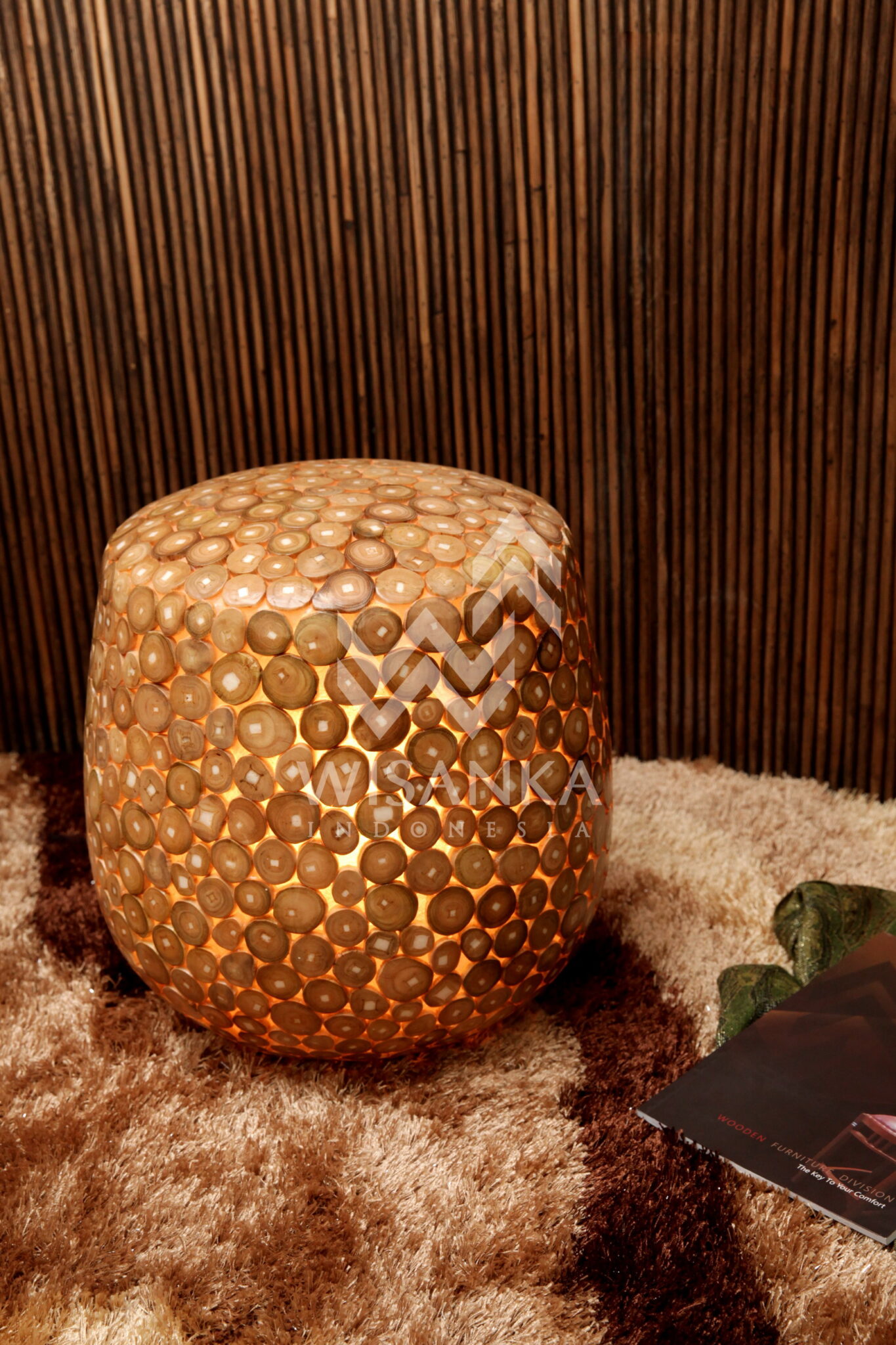Using of natural teak wooden slices, Teak Lamination Stool Ottoman Lamp Stool Chair will enhance the beauty of your room or even your garden when it was used as an outdoor lamp. Teak Lamination Stool is made from fiberglass and decorated with teak wooden slices. The fiberglass was hand glued layer by layer in a stool shaped molding. This stool easy to replace the led bulb inside.
This beautiful ottoman is light you envy everyone. With modern touches still natural look adorn every room or corner and the light spread a feel-good atmosphere. Place it in your room, garden or backyard, this stool lamp is suitable as a home decoration.
Teak Lamination Stool Ottoman Lamp Stool Chair
A stool is one of the earliest forms of seat furniture. It bears many similarities to a chair. It consists of a single seat, for one person, without back or armrests (in early stools). On a base of a stool there are either one , two, three or four legs. A stool is generally distinguished from chairs by their lack of arms and a back. Variants exist with one, two or five legs and these various stools are referred to by some people as “backless chairs”. Some modern stools have backs. Folding stools can become flat, typically by rotating the seat to be parallel with fold-up legs.
Some stools are designed with three legs; because three points define a plane, these will not wobble, even if placed on an uneven floor.
Modern backstools
In modern times, the term “stool” has become blurred, and many types now have backs. These are particularly common among bar stools, tall stools for seating at a counter, often fixed in place. These are a development of the chair as much as the stool, made more compact to allow dense seating around a serving table or counter. They may even be referred to as “backless chairs”. One type of stool, Windsor-back stools, which “are popular in traditional homes”, has a back.
Such backstools developed from around 1900, with the advent of modern materials such as bentwood and later the bent steel tube of Marcel Breuer’s work at the Bauhaus. These isotropic materials no longer depended on the shapes of traditional joinery, as developed for earlier stools, and so strong backs could be attached arbitrarily, without relying on particular leg placements for strength.










